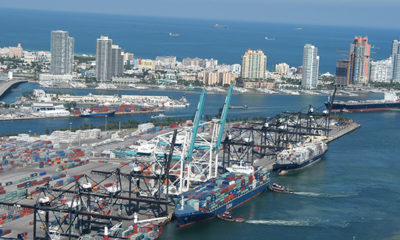- Goldman Sees Greater Chances of Oil Accord
There may be a higher probability of an agreement to cut oil production but the deal may prove self-defeating if resulting rise in prices boosts supply from other producers, according to Goldman Sachs Group Inc.
“Recent comments by Saudi Arabia and Russia point to a greater probability of a production cut,” analysts including Damien Courvalin and Jeffrey Currie said in a note dated Oct. 10. Still higher output from Libya, Nigeria and Iraq are lowering the odds of rebalancing next year. Even if a deal is achieved and successfully implemented, an initial recovery in prices and fundamentals would progressively be undone as non-OPEC output reacts to higher prices, they said.
Oil surged to the highest level since July 2015 in New York Monday as the world’s two largest producers Saudi Arabia and Russia said they’re ready to work together on limiting production. Russian President Vladimir Putin said the nation is willing to participate in OPEC’s efforts to stabilize the market while Saudi Arabia’s Energy and Industry Minister Khalid Al-Falih said he was “optimistic” that there will be a deal that may lift prices as high as $60 by year-end.
“We find that an agreement to cut production, while increasingly likely, remains premature given the high supply uncertainty in 2017 and would prove self-defeating if it were to target sustainably higher oil prices,” Goldman analysts said.
Offsetting Recovery
The bank said oil prices may rise higher than its estimate of $45 a barrel in the first three months of 2017 following an OPEC output cut, while it will be pushed lower later that year than the bank’s forecast of $60 in the fourth quarter as non-OPEC production reacts to higher prices. Goldman maintained its 2017 WTI estimate at $52.50.
“The momentum on this supply response would likely require a renewed cut in OPEC production in 2018, at which point the volume loss would more than offset the price recovery,” the analysts said.
Oil prices have risen about 15 percent since the Organization of Petroleum Exporting Countries agreed in principle last month to limit output to a range of 32.5 million to 33 million barrels a day. The group will meet in November to work on the details of how to share the burden of cuts and ministers from some members, including Saudi Arabia and Algeria, will meet with non-OPEC nations including Russia and Azerbaijan in Istanbul on Wednesday to discuss wider cooperation.
While Putin’s comments at the World Energy Congress in Istanbul are the firmest indication yet that such an agreement is possible, Russia is still pumping at record levels and has stopped short of a commitment to pull back. OPEC members also have many hurdles to overcome before implementing their first cuts in eight years.
Odds of Success
The odds of a successful implementation also remains low as Libya and Nigeria, who are exempt from last month’s OPEC deal, are pumping 500,000 barrels a day more than expected while there’s likely poor compliance from non-core OPEC producers, according to Goldman. Price-insensitive upside risks to global production may also come from the “wall of supply” coming online outside of OPEC next year with 40 percent more new projects than 2016, it said.
“Any of these three forces is sufficiently large in our view in 2017 to make the required cut in Saudi production too large to improve the current funding stress, making the shift in policy premature in our view,” the analysts said.
Failure to reach a deal would push prices to $43, warned the bank which estimates the market to be in surplus in the fourth quarter this year.

 News3 weeks ago
News3 weeks ago
 Business3 weeks ago
Business3 weeks ago
 Technology3 weeks ago
Technology3 weeks ago
 Investment3 weeks ago
Investment3 weeks ago
 Banking Sector3 weeks ago
Banking Sector3 weeks ago
 Banking Sector3 weeks ago
Banking Sector3 weeks ago
 Appointments3 weeks ago
Appointments3 weeks ago
 Investment3 weeks ago
Investment3 weeks ago





























